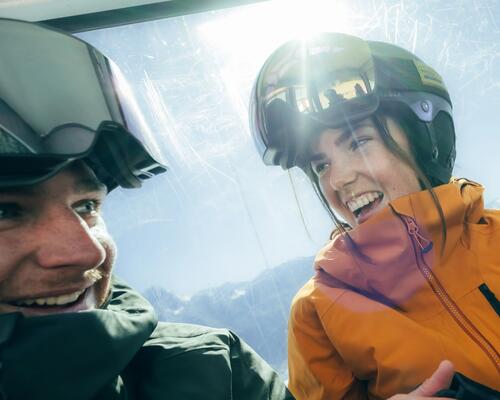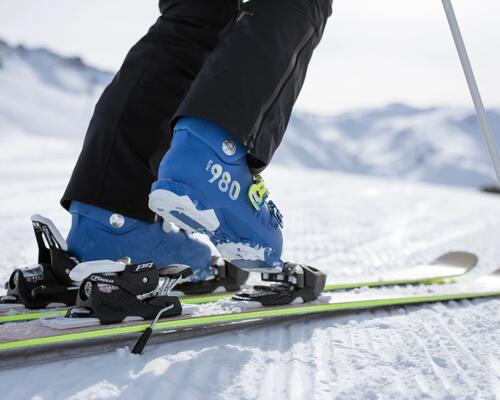
How to choose second-hand winter sports equipment
As well as saving money, buying second-hand skis means fighting against waste, limiting your impact on the environment and giving the product a new lease of life.
Here’s some advice on what to look out for when buying your second-hand equipment, whether it’s alpine skis, touring skis, freeride skis or snowboards... Follow the guide!
Before choosing your pair of skis or snowboard, ask yourself a few questions and pay attention to a few details.
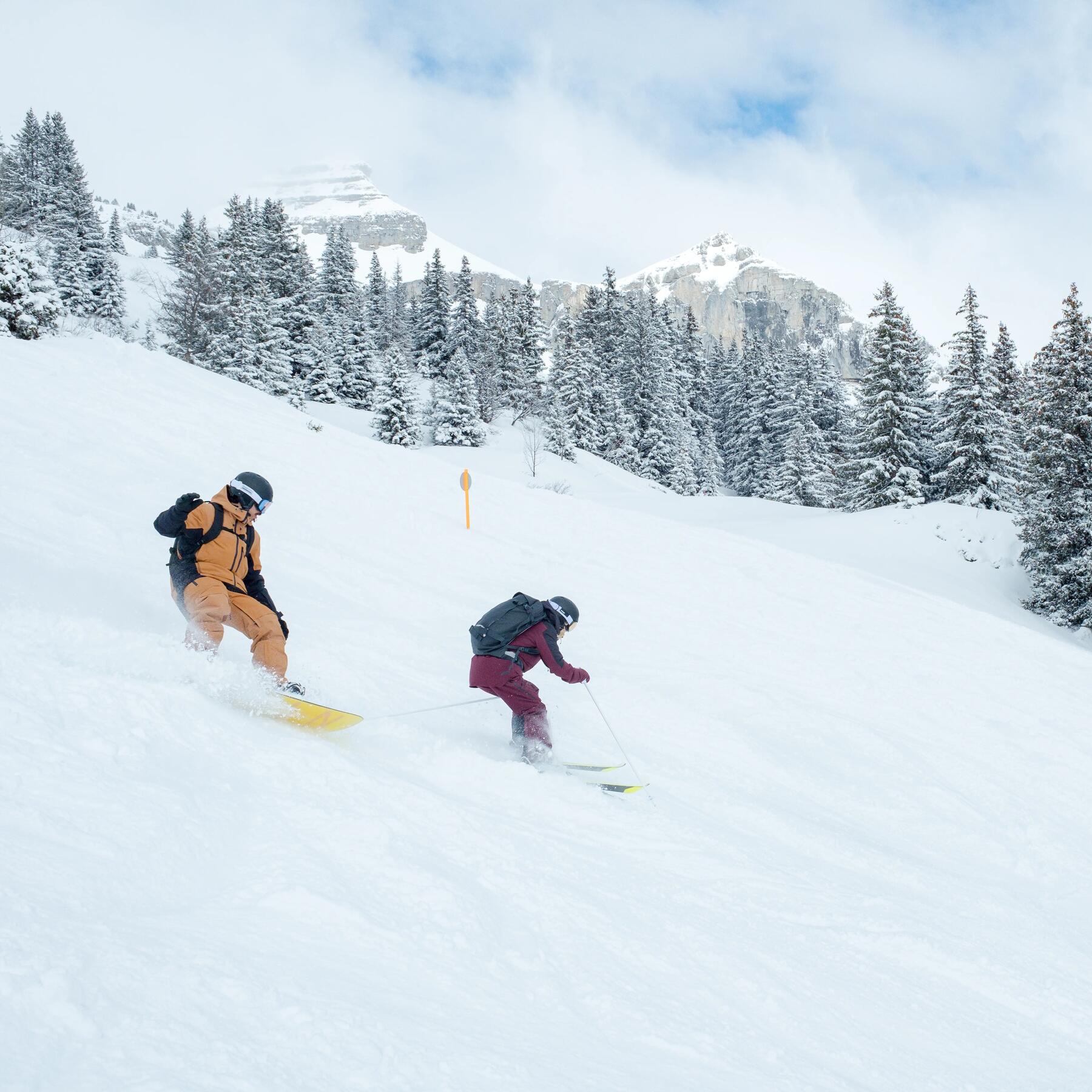
As with new equipment, your second-hand snowboard or skis must of course be suited to your level and style of riding/skiing. Start by asking yourself what type of snow sport you want to do, then go into more detail about the product and its characteristics: stiffness, width of the waist (for skis), stability... Just like new ski equipment.
Once you’ve got a broad outline of what you’re looking for in your head, focus on the size: if they’re too long or too short, your control will be affected, as will your enjoyment on and off the slopes. To find out more about the vocabulary and technical features to look out for, take a look at our dedicated articles on the subject.
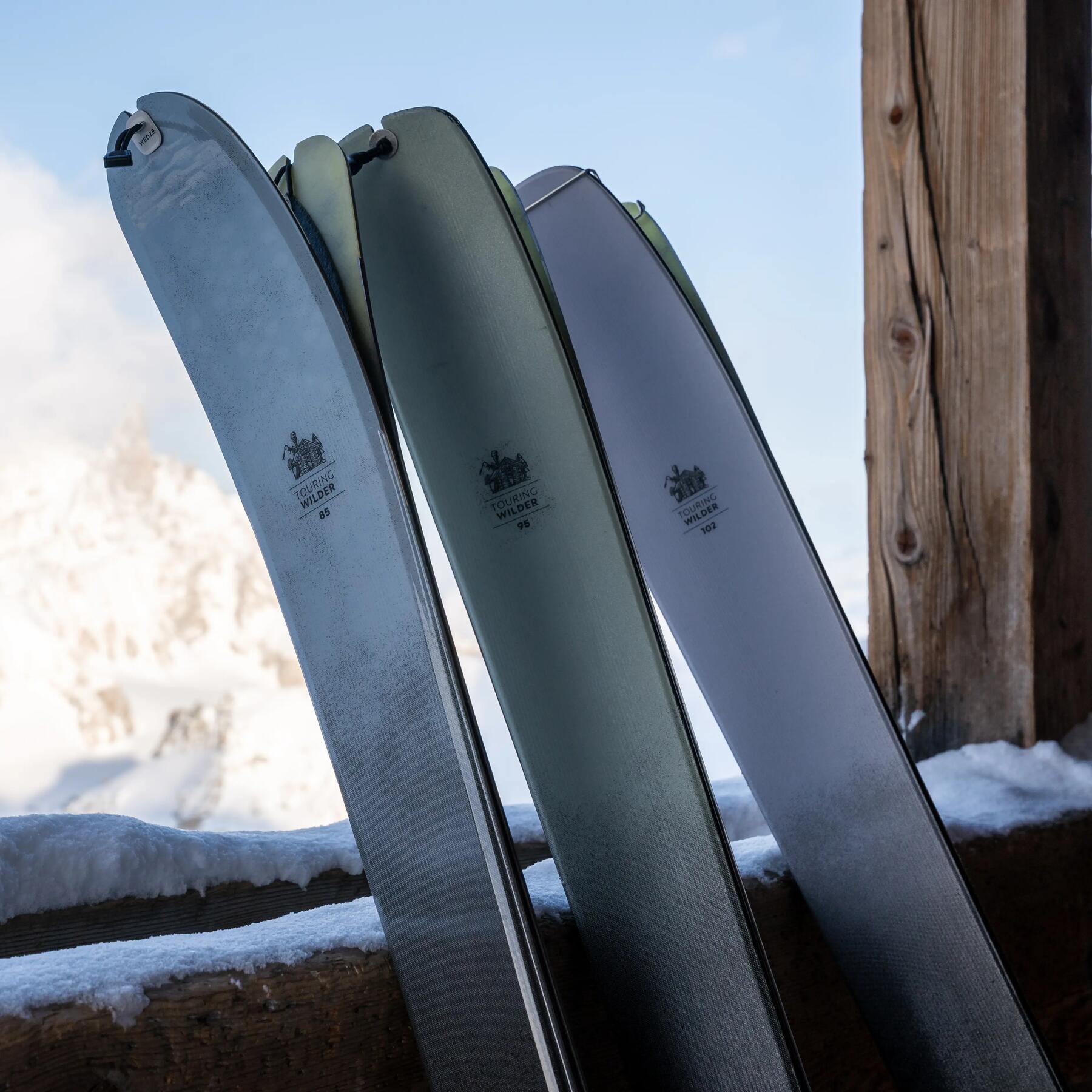
You’ve made your choice and now you’re stood in front of your future snowboard or pair of skis? Before you shake hands and close the deal, check the general condition of the second-hand equipment. Start by inspecting the part under the ski, known as the base. This part will be in direct contact with the snow, and so it must be in good condition and free from rust, deep scratches or holes. If the base is too damaged, you’ll have poor glide, but if there are scratches or other damage, the ski isn’t necessarily unusable! Depending on the extent of the damage, you can do some maintenance yourself or you can bring the items to our workshops.
Next, inspect the edges, which are the metal parts on the sides of your skis or snowboard. It’s thanks to these that you can grip the snow when you’re turning. As long as you are really careful, you can run your finger along the edges to check whether or not they are sharp. You can also sharpen the edges if necessary. You can do this at home, following a specific procedure, or in your local Decathlon shop.
Make sure that the bindings on the pair of skis or snowboard you are about to buy match your boots. For snowboards, look at the size, and for skis, check whether the bindings are for alpine or touring skis.
Of course, you can adjust the bindings to fit your shoe size (except for touring skis). Adjusting your bindings is very simple and you can do it yourself by following our tutorials.
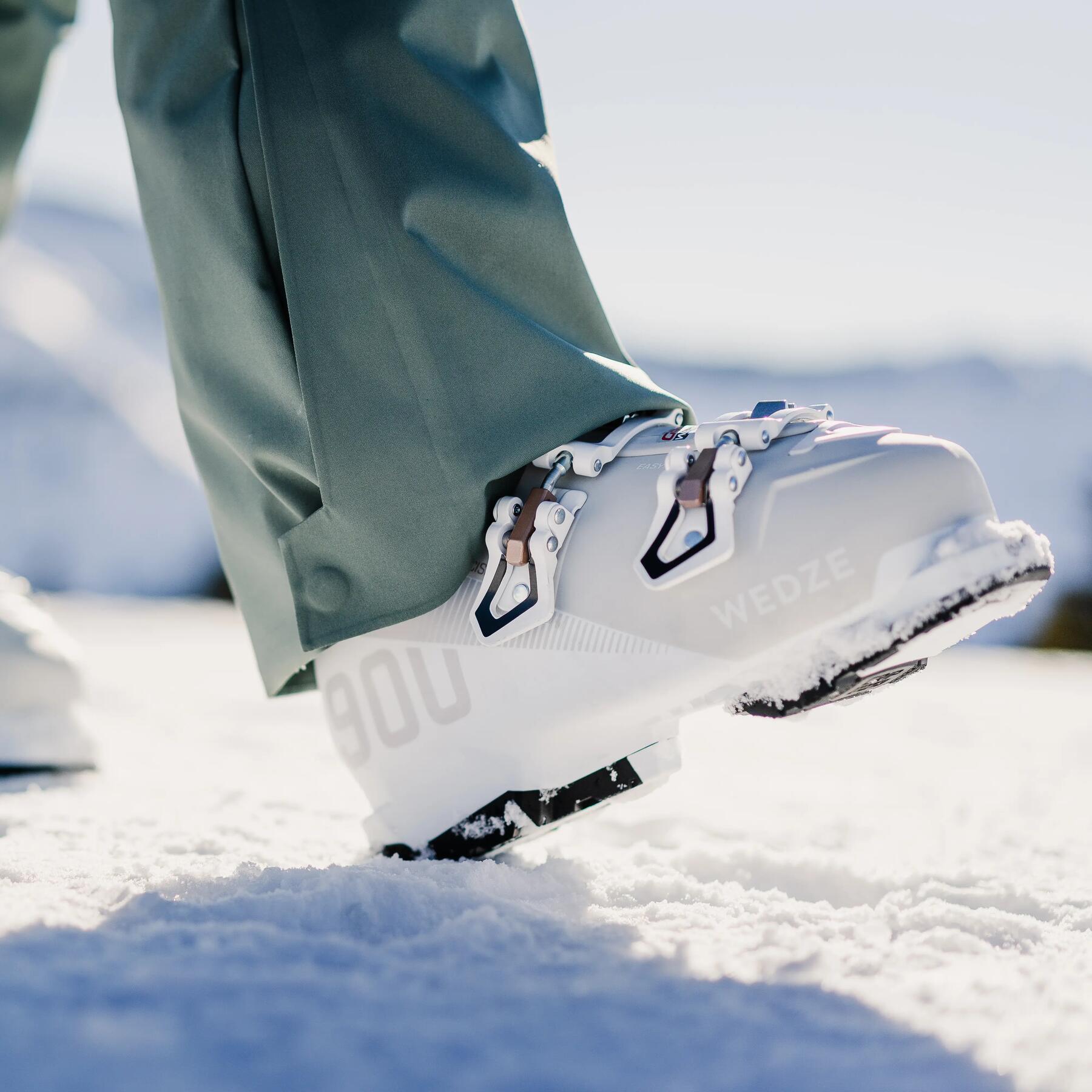
As the link between your body and your pair of skis or snowboard, boots are a key element for your skiing and deserve special attention. As well as considering whether they’re for alpine skiing or ski touring, for example, beginners need softer boots to make it easier to progress, while advanced skiers will prefer more rigidity for better control. It’s not always easy to find the right boot for you, so you can ask our in-store advisers or read our dedicated articles.
As far as general condition is concerned, as well as looking at the outside (is the buckle/lacing system in good condition, etc.) take a close look at the liner. An essential part of ski boots or snowboard boots, the liner is in direct contact with your foot and must provide the comfort you need while skiing by fitting your foot properly (as well as being in good condition). Whether for reasons of comfort or hygiene, don’t hesitate to change the lining of the boots you buy so that you can practice in the best possible conditions.
With the boom in resale applications and websites for private individuals, you may be tempted to buy second-hand ski clothing or accessories. You can also buy second-hand ski clothing and accessories in our shops.
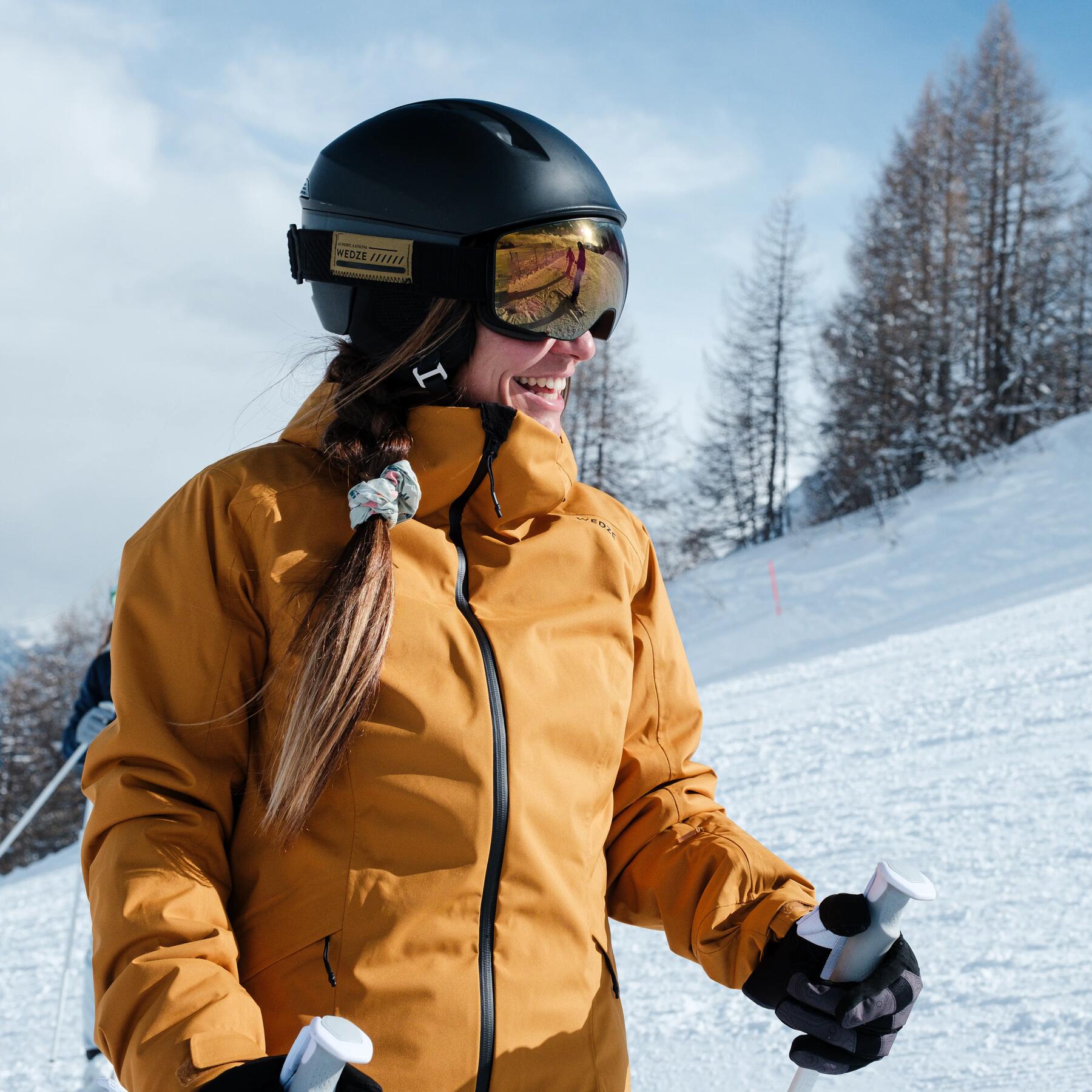
Our shops have also been stocking second-hand clothing for several seasons now. They are carefully inspected and refurbished by our teams or partners to keep you warm and dry on the slopes and in the powder. As well as being good value for money, opting for second-hand clothes is also good for the environment as it reduces the consumption of new resources! We’d like to take this opportunity to remind you not to throw away damaged technical clothing. You can repair your jackets, trousers or base layers at home or in one of our workshops.
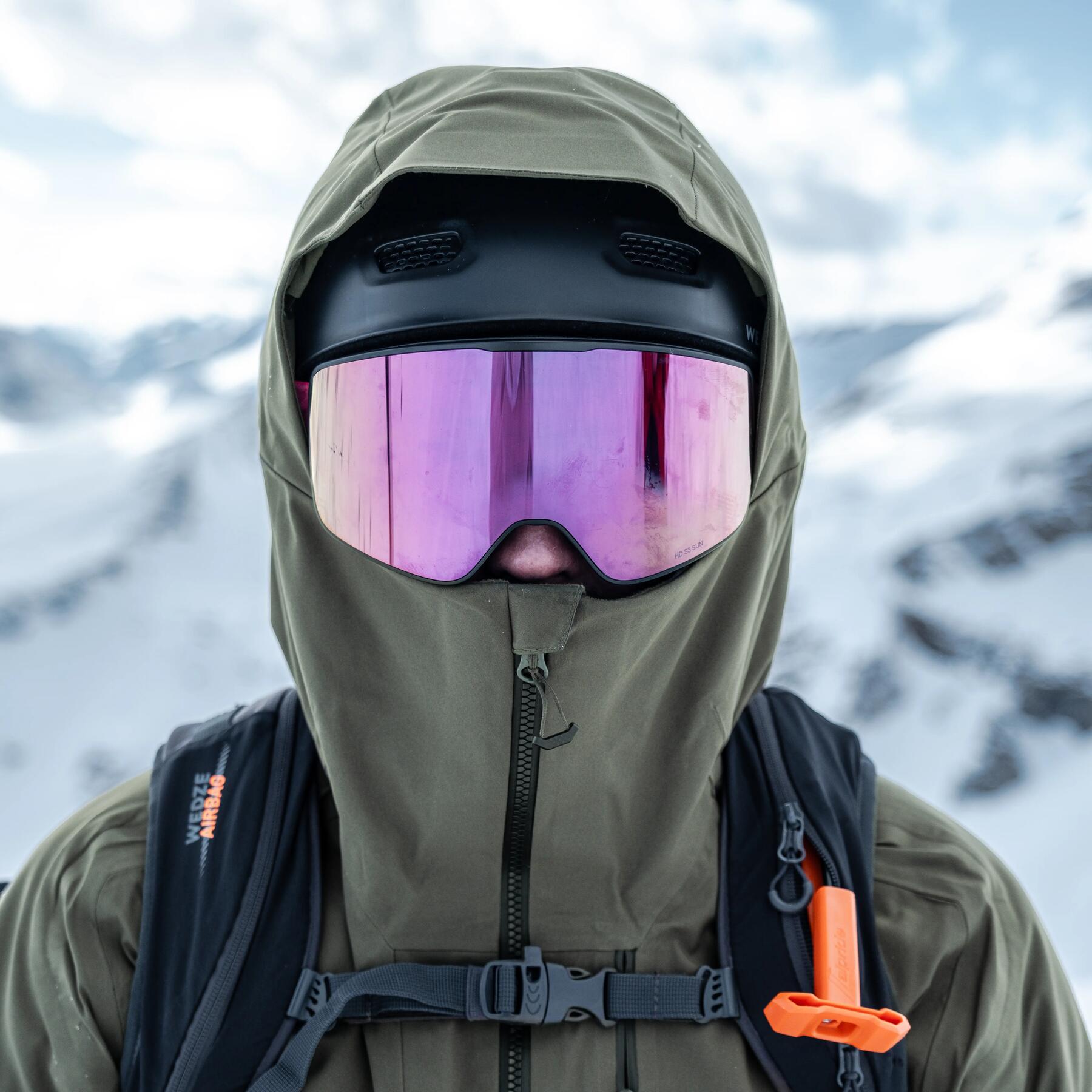
The skis are OK, the snowboard is OK, the outfit is OK, but there’s still the accessories. Let’s start with the first priority: your ski helmet. If it’s possible to buy a second-hand helmet, we advise you to check with a professional to make sure it’s in good condition. You may not be able to tell if the helmet has suffered a major impact, but if there were to be another impact, its protection may be less effective. In any case, when you’re looking for a helmet, look for one that fits your head perfectly and complies with current safety standards.
For ski poles, if you opt for adjustable poles, make sure that the mechanism is in good condition. As for the goggles, carefully inspect the state of the screen (= the glass of the goggles) to check that there are no scratches or impacts that could disturb your field of vision. To select the right product, you can also refer to our dedicated articles, especially for goggles, which have a lot of specific features (depending on the weather, the light, whether the screen is HD, etc.).
While it’s possible to find second-hand ski or snowboard equipment from private individuals, you can also do so in our shops and on our website. As with new equipment, the range of second-hand products is varied to meet the needs of all sportsmen and women, depending on their level and level of activity. To offer you a second-hand experience similar to that of first-hand equipment, the products are carefully inspected, refurbished and certified by our teams before being put on sale in our second-hand sections. Note that Decathlon guarantees your second-hand equipment for two years from the date of purchase (details can be found in our general terms and conditions of sale, available on our website).
For those who are curious and would like some clarification: when we talk about certification, we’re talking about checking and refurbishing equipment. For skis and snowboards, we check the condition of the base (absence of deep scratches), edges (absence of holes, rust, sharpness, etc.), sidewalls (holes, impacts), topsheet, tip, heel and bindings. For boots, we check that the heads of the anchor bolts are not visible, or that all the buckles are working, for example.
And if you want to sell, you can do that in our shops too! For several seasons now, we’ve been offering a buy-back scheme for ski and snowboard equipment from a wide range of brands, if the equipment is less than five years old and in good condition. It’s an easy way to give your equipment a new lease of life, with discounts if you want to buy new.
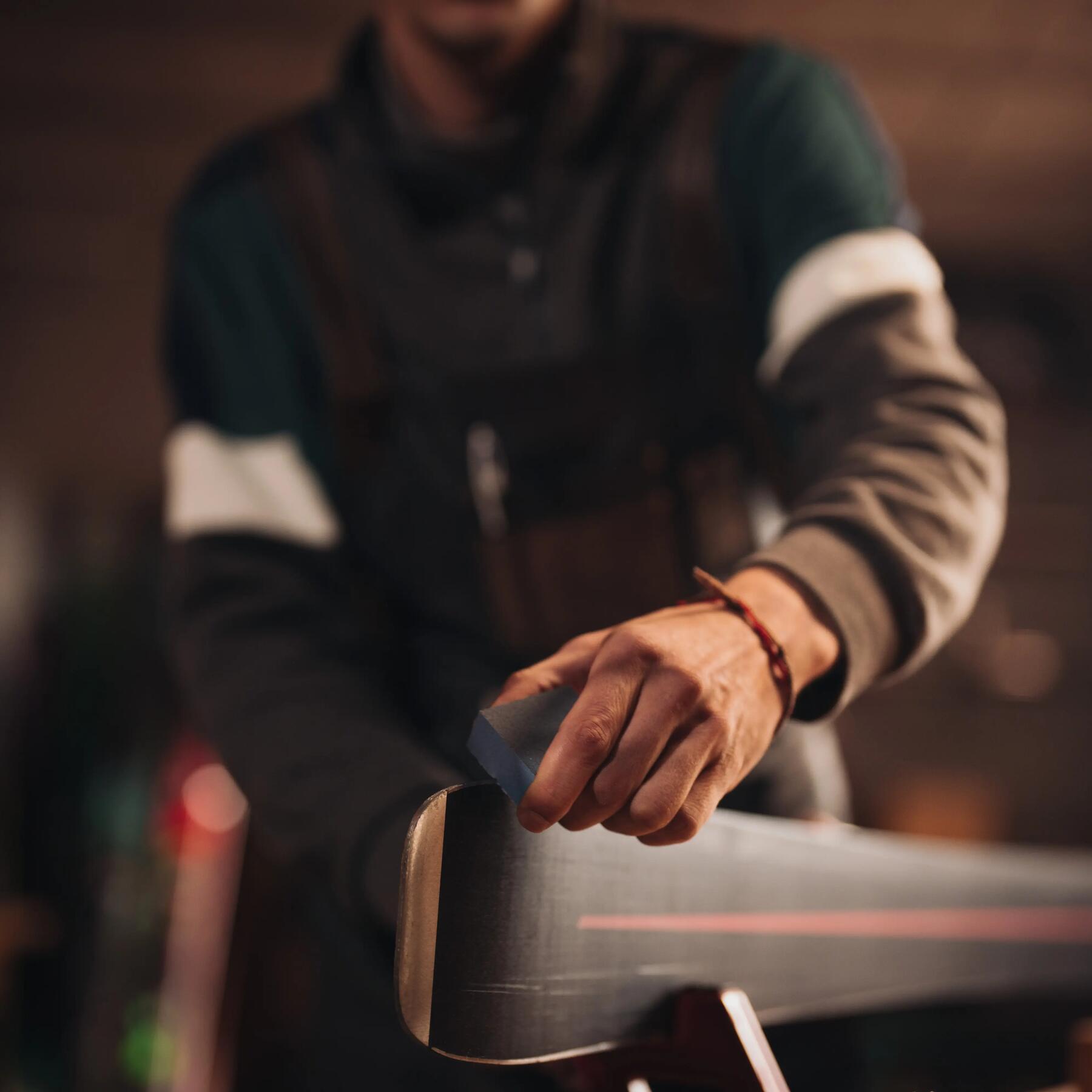
Choosing second-hand equipment is a very good economic and ecological decision, as is looking after your equipment properly!
Keeping your skis and/or snowboard in excellent condition gives you a great feeling and performance on the slopes, but is also essential to making them last longer. To do this, you can turn to the professionals in our shops, where our teams can provide a number of services, or you can carry out the maintenance at home by following our advice.
You now have all the information you need to find the right second-hand equipment. Don’t forget that if you’re in any doubt, you can turn to our advisers in our shops, who will help you with your search. It’s up to you now, and we hope you have a great season with your new second-hand equipment!

